News - GLOBE Observer
Spotlight on the October 2023 Annular Eclipse
Thank you to everyone who participated in data collection during the annular solar eclipse on 14 October 2023! Our team is working on a more detailed analysis of the data (stay tuned for more on that later), but we wanted to share a few preliminary stats and highlight some images from volunteer scientists and GLOBE Observer team members. If you are looking for your own eclipse data, tap on "My Observations" on the home screen of the GLOBE Observer app, or click on "View My Observations" at the upper right when logged in to observer.globe.gov.
In the area experiencing the eclipse (at any level of obscuration), we received over 17,000 air temperature measurements - many of those are from automated weather stations connected to the GLOBE database, but we estimate about 5,000 measurements were related to the eclipse directly. (See a video of the measurements over the course of the day below, or explore the animation of the data at five minute increments yourself.)
We also received over 2,100 clouds observations from nearly 400
individual users at over 600 distinct locations and 122 land cover
observations (over 100 users and distinct sites), as seen in these
screenshots from the GLOBE
Visualization System.
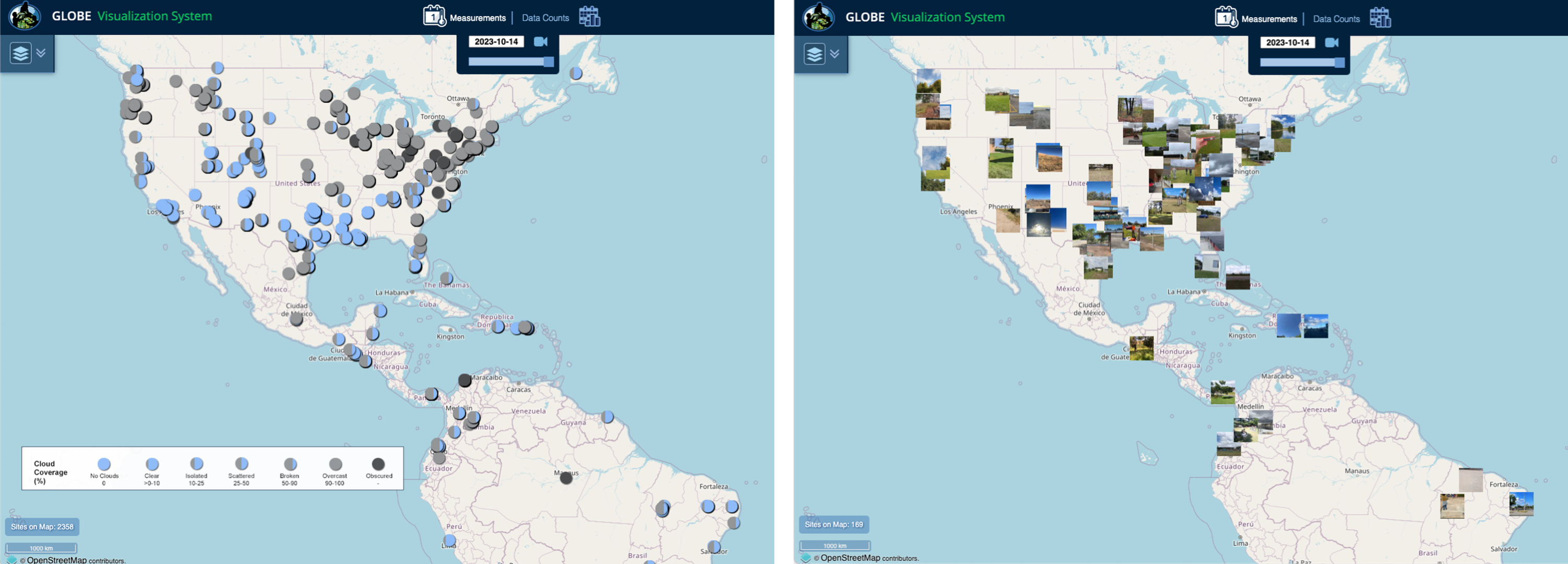
Here is a video showcasing just a few of the many graphs of air temperature and clouds data that were collected on 14 October.
And enjoy some of these images of eclipse events that took place around the country!
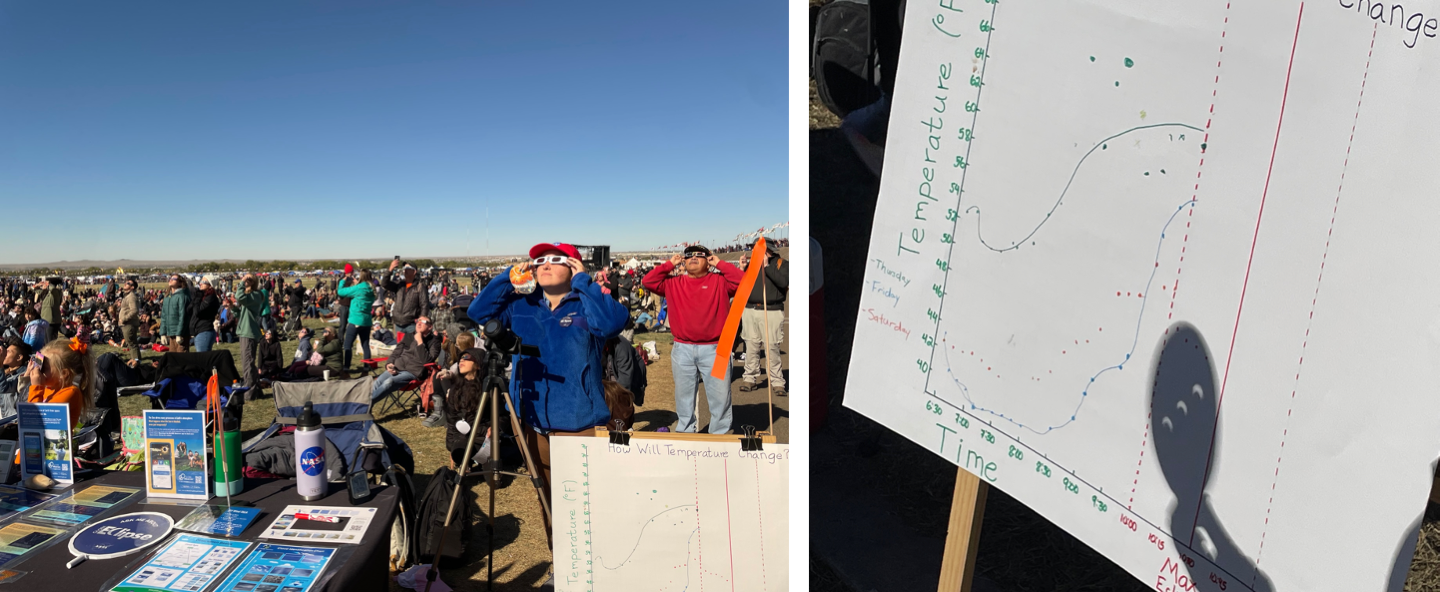
Left: GLOBE Observer graphic designer Heather Mortimer (blue jacket) enjoys the annular eclipse with a crowd at the Albuquerque Balloon Fiesta in New Mexico. Right: Close-up of the paper graph of data collected during the eclipse in Albuquerque. Credits: GLOBE/NASA (Holli Kohl)
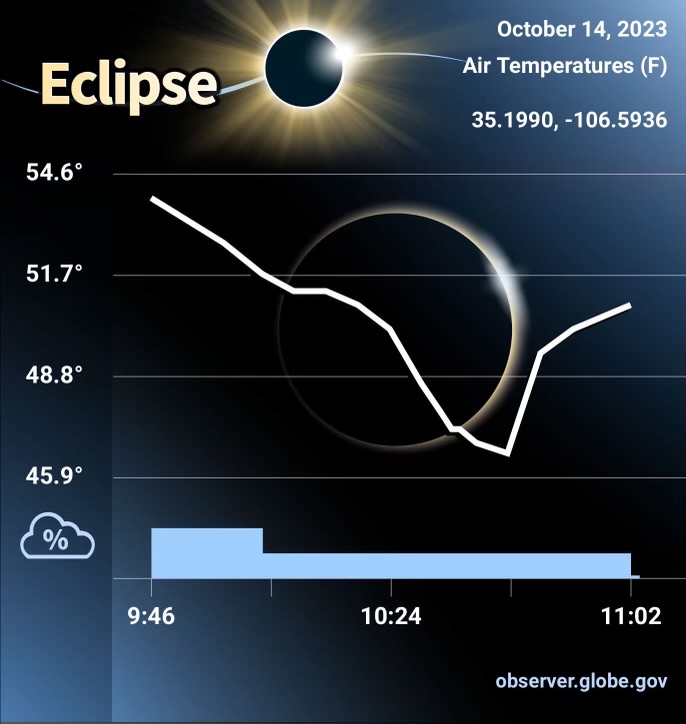
Graph of data from Albuquerque collected in the GLOBE Eclipse tool in the app.
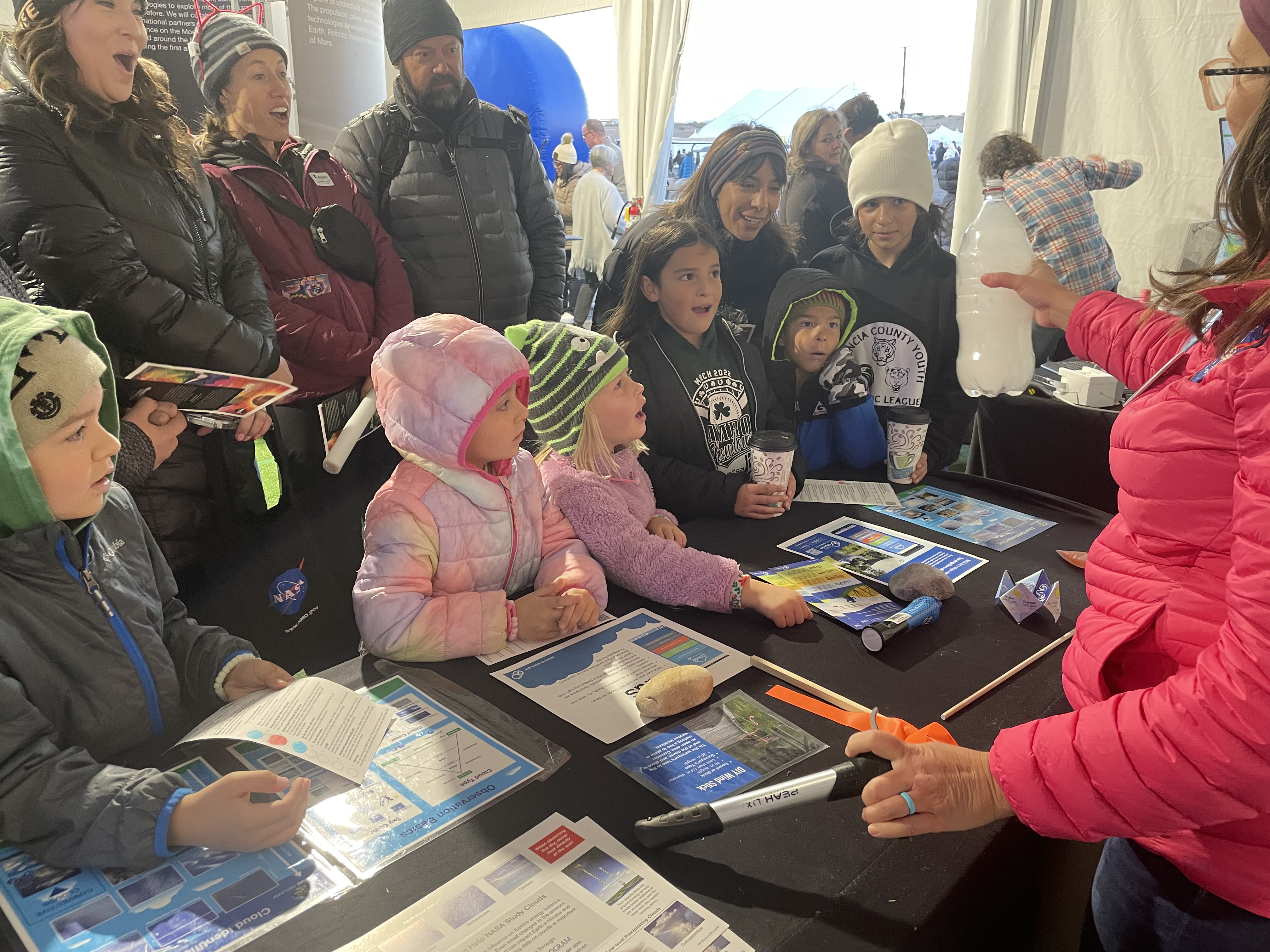
NASA GLOBE Clouds project scientist Marilé Colón Robles (at right in pink jacket) awes a crowd at the Balloon Fiesta with a Cloud in a Bottle demonstration. Credit: GLOBE/NASA (Holli Kohl)
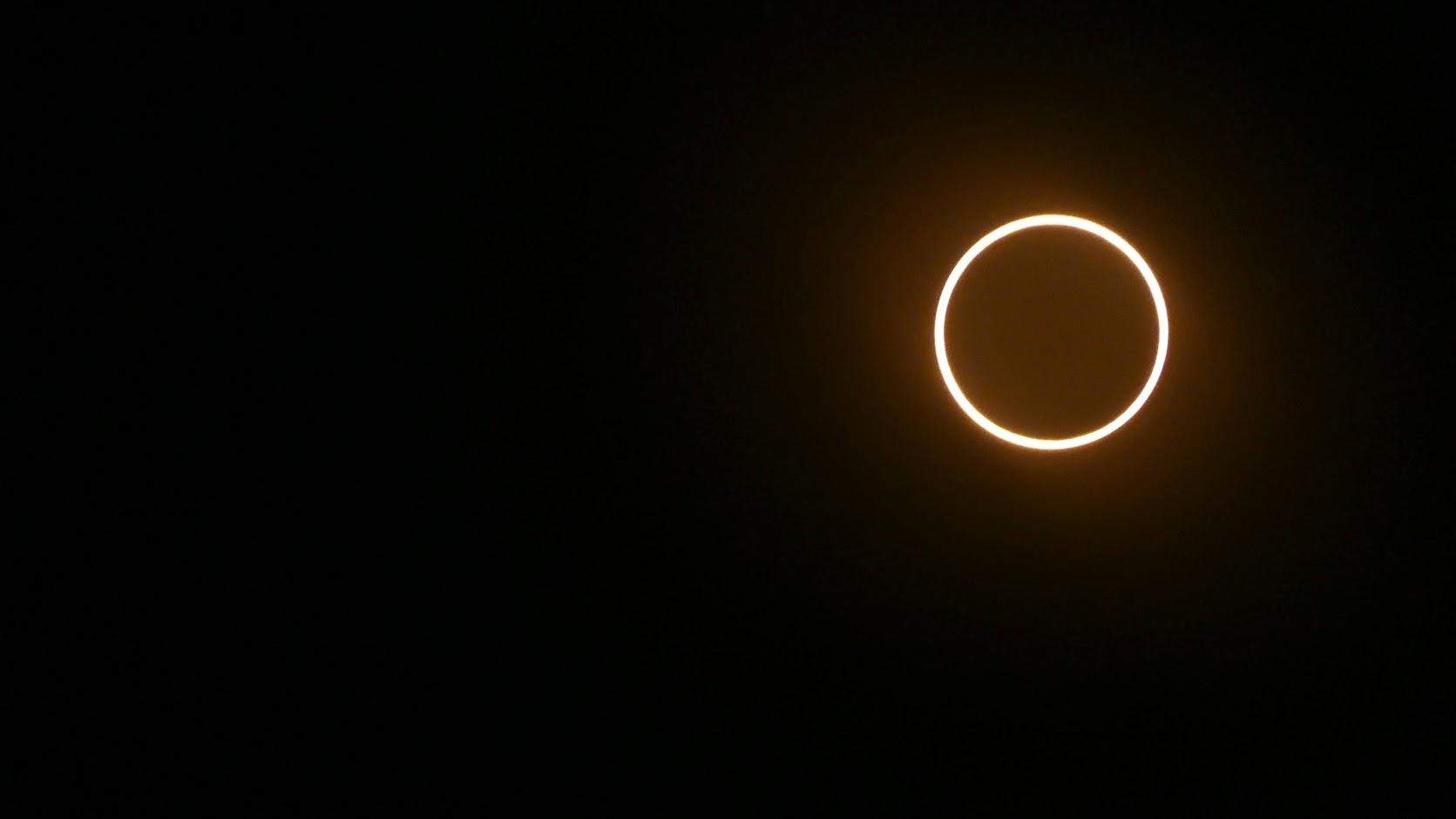
The “ring of fire” from Albuquerque. Credit GLOBE/NASA (Heather Mortimer)
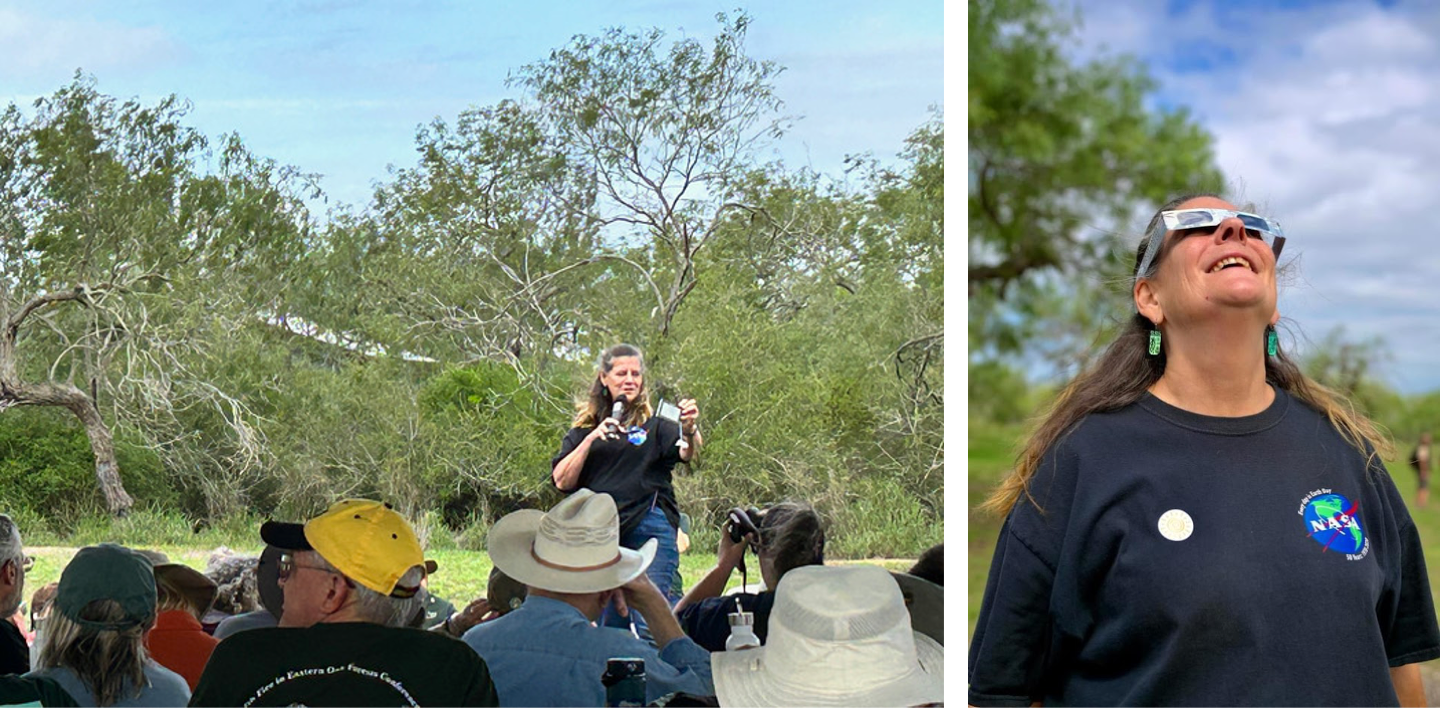
Left: Dorian Janney, GLOBE Observer team member, explains to a group of Texas Master Naturalists at El Sauz Ranch near Port Mansfield, Texas, how to use a digital thermometer. Right: Dorian enjoys the eclipse experience. Credits: Jonathan Vail
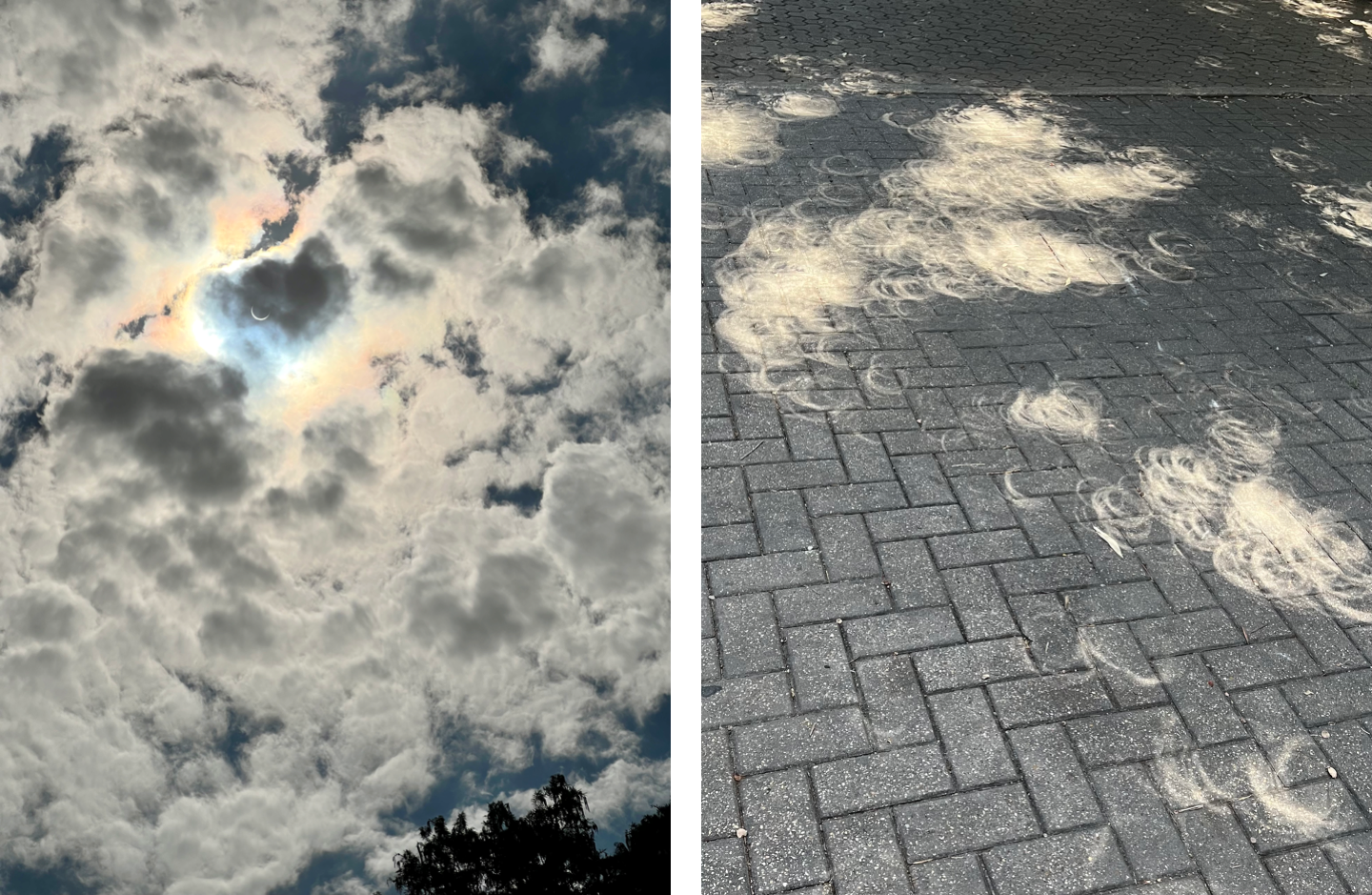
Left: The partial eclipse peeks through the clouds at the San Antonio Zoo. Right: Also at the zoo, a tree’s leaves create a multitude of Sun crescents during the eclipse. Credits: Joan Ingram
Did you participate in the October annular eclipse with GLOBE or host an eclipse event? Or are you interested in observing the total solar eclipse on 8 April with GLOBE? If so, we want to hear from you! Join us on 9 November at 12:00 pm ET (17:00 UTC) for November’s GLOBE Observer Connect event for an informal conversation about what worked well during the October annular eclipse and what you would recommend doing differently in April. We want to learn from your experience! Register for the session.
Comments
View more GLOBE Observer news here.








